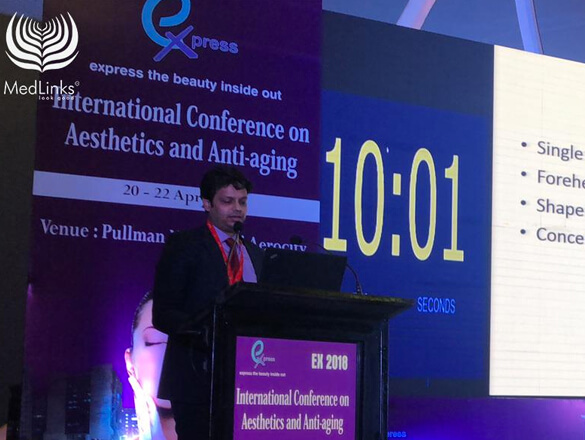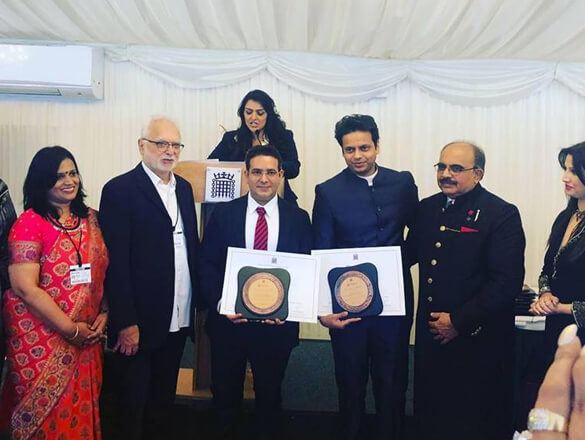Other Resources
Transplant: Old vs. New
All hair transplant procedures, including Follicular Unit Transplantation (FUT), Follicular Unit Extraction (FUE), and Robotic Follicular Unit Extraction, are primarily based on the principle concept of “Donor Dominance”.
The concept was primarily described in Dr. Norman Orenteich’s paper on donor dominance (1959) in which he declared that since genetic predisposition of hair loss resides in the follicle, hair retains the characteristics of the donor area, regardless of where in the scalp it is placed.
Hair transplant procedures have undergone major evolutions over the years. Earlier, larger grafts were used in the transplantation procedures that provided an unnatural look to patients.
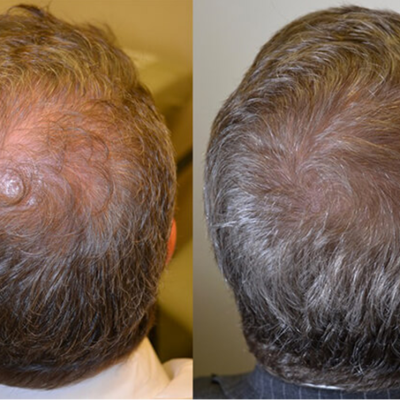
However, grafts became smaller and procedures further became effective with the advent of time.
This technologically advanced 21st century has experienced major developments in the field of hair transplantation. Hairs are now transplanted as individual follicular units with efficiently designed procedures that provide a comprehensive, natural looking hairline to the patients.
At MedLinks, our surgeons have attained expertise in the Follicular Unit Transplant (FUT) procedure. Originally developed on the basis of the work done by Dr. Bobby Limmer, the procedure includes harvesting of hair from a donor strip with stereo-microscopic techniques. Though the procedure may leave a barely visible fine linear scar (after surgery), it still remains one of the best and cost efficient hair restoration surgeries.
Since FUT shared a scar setback for patients, Dr. Ray Woods from Australia invented a hair transplant procedure that involved the extraction of individual follicular units directly from the scalp. Dr. Bernstein and Rassman further plodded away on the technique and introduced the Follicular Unit Extraction (FUE) procedure in their publication.
Our surgeons at MedLinks are experts in performing the Follicular Unit Extraction (FUE) procedure and have conducted almost 240 surgeries successfully. We have also pioneered the Perfect-i FUE hair transplant technique which is an extremely precise and advanced procedure that involves instant implantation of extracted follicles.
History of Procedure
Early Years: Hair Plugs
Dr. Norman Orentreich was the first person to perform a hair transplant surgery in the year 1952 in New York. He is also known as the father of modern hair transplant and has pioneered the term “Donor Dominance”. He wrote a paper on the respective that was initially rejected by medical communities, but later got published in the year 1959. His landmark study coined the term “donor dominance” that emerged as the base principle concept of all modern hair transplant procedures. His study claimed that the transplanted hair continues to display similar characteristics of hair extracted from the donor area.
However, his pioneering study steered the focus away from a distinct reality that a successful cosmetic result is not dependent merely on effective hair growth. His procedure used large grafts and failed to deliver natural results.
During the 1970’s, almost all hair transplant procedures used large grafts. It became well-known as “Hair Plugs” and emerged as synonymous with the term Hair transplant.
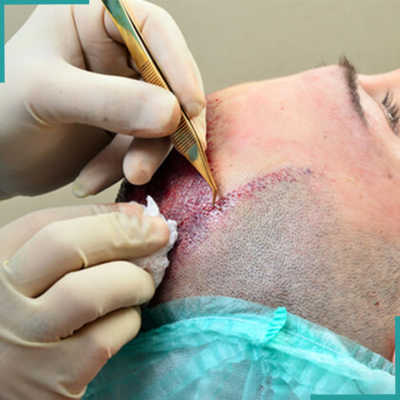
Mini Grafts and Micro Grafts
The year 1984 marked the introduction of the “Mini-Graft” technique in the hair transplantation domain. It used smaller graft cuts from the donor tissue strip rather than punching them out directly from the scalp (back). Further, surgeons started using even smaller grafts of 1-2 hair, known as “Micro-Grafts” for softening the frontal hairline.
This devised a procedure known as “Mini-Micro Grafting” that placed mini grafts in the scalp center and micro grafts around it to provide more natural results. It gradually replaced the traditional Hair-Plug technique to emerge as the foremost hair transplant technique in 1990’s.
In mid-1990’s, a technique named “Mega-sessions” gained popularity that used extended number of mini-micro grafts.
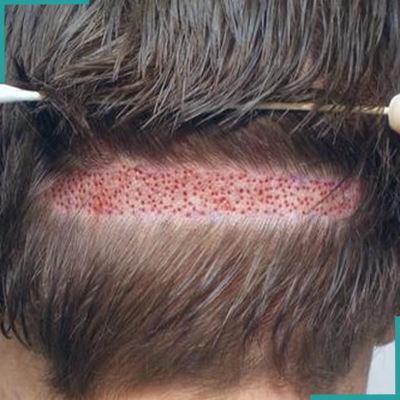
Follicular Unit Transplantation (FUT)
In the year 1995, Dr. Robert Bernstein and Dr. William Rassman pioneered the Follicular Unit Transplantation procedure that significantly transformed the hair transplantation industry. Popularly known as FUT hair transplant, this procedure transplanted grafts of naturally occurring units (of 1-4 hair), known as follicular units. The process included stereo-microscopic graft dissection that was based on dissection techniques invented by Dr. Bobby Limmer in Australia. It obtained follicular units from the donor strip and provided significantly improved results.
FUT initially faced resistance and skepticism from the hair restoration community. But since the method provided great results, it became popular among patients and surgeons all around the globe reluctantly adopted it. By year 2000, the procedure became conventional to emerge as “Gold Standard” for surgical hair restoration.
Follicular Unit Extraction (FUE)
Even though FUT remained the best bet for people, the idea of harvesting grafts directly from the scalp was never dispelled. An Australian doctor probed the idea of removing units directly from the donor area using a very tiny punch. The technique eventually gained a lot of popularity in the hair transplant community as the team of Dr. Bernstein and Dr. Rassman further worked and introduced “Follicular Unit Extraction (FUE)” in their publication Follicular Unit Extraction: Minimally Invasive Surgery for Hair Transplantation in the year 2002. However, like FUT, FUE procedure also faced resistance as it required special devices and entitled surgeons to develop new surgical skills.
In year 2005, a paper by Dr. James Harris added to the popularity of the FUE procedure. He introduced the two-step sharp and dull punch instruments that were capable of minimizing the damage to follicular units during the procedure. Further with time, new innovative devices like SAFE system, NeoGraft, SmartGrafts, and ARTAS robotic hair transplant systems were introduced that escalated the popularity of FUE hair transplantation.
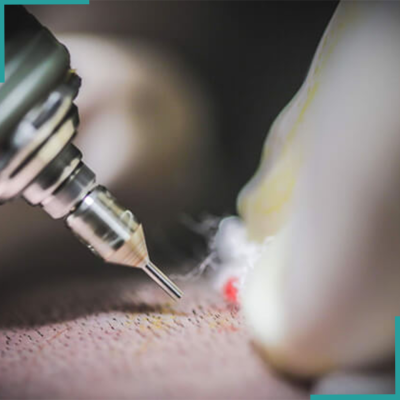
Mini Grafts and Micro Grafts
The advent of time has led to various technological innovations and integrations in the Hair Transplant industry. In year 2011, Restoration Robotics INC. introduced the first ARTAS robot in the field of hair restoration and gave birth to the robotic follicular unit extraction procedure.
ARTAS robot is the most advanced technology used for graft harvesting and recipient site creation. It has empowered the surgeons with utmost precision and consistency. In the year 2013, Restoration Robotics INC. introduced recipient site creation capabilities for the ARTAS Robot. Further in 2016, they worked with Dr. Bernstein to develop an algorithm that allowed ARTAS robot to automatically select follicular units for harvesting while minimizing the risk of wounding.
FUT FUE Milestone
Restoration Robotics INC. released an upgrade to ARTAS robot, ARTAS 9x. It was presented by Dr. Robert Bernstein at the annual meeting of ISHRS, Prague.
2017
Restoration Robotics INC. worked with Dr. Robert Bernstein for developing an algorithm that empowered ARTAS robot to automatically select follicular units for harvesting.
2016
Dr. Robert Bernstein introduced Long-hair Robotic Follicular Unit Extraction technique that harvested follicular unit from a patient’s donor area with long hair.
2015
Restoration Robotics INC. launched the recipient site creation capabilities for the ARTAS robot.
2013
Restoration Robotics INC. introduced their first ARTAS robot in the industry. This gave birth to the highly innovative and technologically advanced Robotic Follicular Unit Extraction (FUE) technique. Dr. Bernstein was the early adopter of this technique.
2011
Dr. James Harris introduced two-step sharp/dull punch instruments, especially designed to minimize follicular unit damage during the procedure.
2005
Team of Dr. Robert Bernstein and Dr. William Rassman worked on the idea (originally developed by an Australian doctor) of extracting units directly from the donor area using a tiny punch. They introduced the Follicular Unit Extraction (FUE) technique in their paper Follicular Unit Extraction: Minimally Invasive Surgery for Hair.
2002
Although the FUT technique provided great results, it still remained subject to criticism and resistance till the late 1990’s. However, the procedure gradually got acceptance worldwide and emerged as a “Gold Standard” in the year 2000.
2000
Dr. Robert Bernstein and Dr. William Rassman pioneered the “Follicular Hair Transplant (FUE)” procedure. It coined the term follicular units which was partially based on the graft dissection technique developed by Dr. Bobby Limmer.
1994
The “Mini-Micro Grafting” technique gradually replaced the traditional hair plug technique and emerged as the primary hair transplant procedure. In the same decade, “Mega-Sessions” technique also gained popularity that used extended number of micro-mini grafts.
1990's
Dr. Bobby Limmer started using the microscopic graft dissection technique in Australia.
1988
The “Mini-Graft” technique was introduced which used smaller graft cuts from the donor tissue strip, rather than punching out (grafts) directly from the back of the scalp. Later, surgeons started using even smaller “Micro-Grafts” that softened the hair line. They further devised the “Mini-Micro Grafting” technique that used a combination of mini grafts and micro grafts to deliver natural results.
1984
Throughout the decade, surgeons used larger grafts in all hair transplant procedures. The procedure became popular as “Hair Pug technique” and the term became synonymous with hair transplantation in the community.
1970's
Surgical hair transplantation was finally accepted in the cosmetic surgery domain. However, Dr. Orentreich’s technique used larger grafts and failed to deliver natural results.
1960's
Dr. Norman Orentreich published his paper and coined the term “Donor Dominance”. It explained the fundamental principle of hair restoration and became the basis of all modern-day hair transplant procedures.
1959
New Office, CA
The year 1952 marked the first largely recognized milestone of the hair restoration community when Dr. Norman Orentreich reinvented the modern-day hair transplantation procedure. He performed the first known surgery in New York on a patient suffering from male pattern baldness.
1952
In the year 1943, Japanese dermatologist Dr. Hajime Tamura honed Dr. Shoji’s technique and used smaller grafts (of 1-3 hair) for replacing lost pubic hair in female patients. He used an elliptical incision for extracting the donor tissue and dissected it into individual grafts.
1943
The idea of modern-day surgical hair restoration procedure was initially fostered in Japan in the year 1939. Dr. Shoji Okuda described the process of surgical hair restoration for burn victims in his paper. He narrated the punch technique for extracting round sections of hair bearing skin and implanting them on the targeted area.
1939
Hair Transplant Myths
Hair restoration surgeries have continuously progressed to transform the lives of many individuals for good. However, a majority of the population is still misapprehended with regards to hair transplantation due to the prevalence of various encircling myths.
At MedLinks, we ensure that our patients are truly delighted with our delivered results. We believe that a better informed patient understands the process and gets maximum satisfaction from the outcomes. Thus, we always work to debunk the myths related to hair transplant procedures.
Frequently Asked Questions
It is one of the primary myths associated with hair transplant in delhi that has restricted many people to avail benefits of the life-changing surgery. This myth has rooted hesitation and reluctance in the minds of many aged people as they limit themselves from getting their hair transplanted. However, there is no scientific reason or fact that supports this belief. Our experts at MedLinks believe that all patients, irrespective of age, can opt for hair transplant surgery as long as they have a healthy donor area.
Hair loss and baldness are problems prevalent in both men and women as they (both) look out for a potential solution to it. However, this myth has forced majority of women to believe that hair transplant is beneficial only for men. Although baldness in women is different from baldness in men, our procedures deliver the same effective results for both.
Hair transplant surgery is aimed at delivering permanent results. Thus, patients should conduct thorough research before making any decisions with regard to the restoration process. You can also consult our experts at MedLinks for getting clarification on all queries.
Graft transplant is a tedious and concentration oriented procedure. Although many claim that long hair transplant sessions minimize donor scarring, it may risk sub-optimal hair growth and may force the surgeon to transplant hair in unideal areas.
At a younger age, hair fall patterns are unpredictable and may become extensive in future. Furthermore, since the permanency of the donor area cannot be determined at a young age, chances of a successful transplant is higher in older people. However, we at MedLinks, believe that age is not a solid determinant of a hair transplant procedure.
Hair transplant is a prolonged procedure. Since the growth of the transplanted hair is slow, it delivers comprehensive results gradually after one year. However, if a patient undergoes the surgery too early, it could be a waste of time and money as it may accelerate hair loss.
Density of hair is not dependent on the size of the graft, rather on the number of transplanted grafts. In contrast, larger grafts may accord unnatural results.
Scalp reduction includes cutting of bald area (crown area in general) for reducing its size. In order to close the gap, the scalp is advanced from the back to the sides (of the scalp). However, this decreases the hair density in the respective area and makes the scalp tighter. This further limits the ability of extracting hair from the donor area and leaves the front and top of the scalp too sparse.
Follicular Unit Transplantation (FUT) is a conventional hair transplant procedure that involves the removal of skin, potentially leaving scars. Whereas, Follicular Unit Extraction (FUE) is a comparatively newly developed procedure that includes extraction of single units from the donor area. The risk of scars is eliminated by minimally invasive procedure.
Hair transplant surgery performed at MedLinks is a pain free procedure that is carried out under local anesthesia. We ensure patients experience no discomfort during or after the surgery.
Seminars


